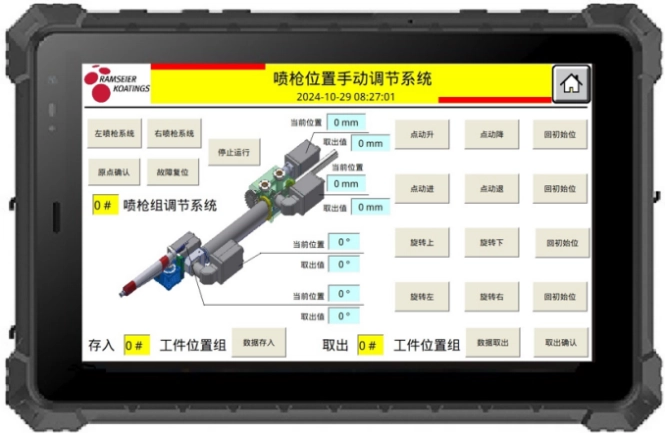Content Menu
● What Are Control Systems?
>> Conventional Control Systems
>>> Characteristics of Conventional Control Systems
>> Applications of Conventional Control Systems
● What Are Smart Control Systems?
>> Characteristics of Smart Control Systems
>> Applications of Smart Control Systems
● Key Differences Between Smart and Conventional Control Systems
>> 1. Adaptability
>> 2. Feedback Processing
>> 3. Human Intervention
>> 4. Cost and Complexity
>> 5. Integration and Connectivity
● The Impact of Technology on Control Systems
>> The Role of Artificial Intelligence
>> Machine Learning and Data Analysis
>> The Internet of Things (IoT)
● Challenges and Considerations
>> Security Concerns
>> Initial Costs
>> Complexity of Implementation
● Conclusion
>> Frequently Asked Questions
In the rapidly evolving landscape of technology, control systems play a pivotal role in various industries, from manufacturing to transportation. As we delve into the realm of control systems, it is essential to distinguish between conventional control systems and their smarter counterparts. This article explores the fundamental differences between smart and conventional control systems, highlighting their functionalities, applications, and the impact of advancements in technology.

What Are Control Systems?
Control systems are integral to managing and regulating the behavior of devices or systems. They are designed to maintain desired outputs by manipulating inputs through feedback mechanisms. Control systems can be broadly categorized into two types: conventional and smart.
Conventional Control Systems
Conventional control systems, often referred to as traditional control systems, have been in use for decades. They typically rely on predefined algorithms and fixed parameters to manage processes. These systems are characterized by their simplicity and reliability, making them suitable for various applications.
Characteristics of Conventional Control Systems
1. Fixed Algorithms: Conventional systems operate based on fixed algorithms that do not adapt to changing conditions. This rigidity can limit their effectiveness in dynamic environments.
2. Limited Feedback Mechanisms: While conventional systems utilize feedback loops, their ability to process and respond to feedback is often limited. This can result in slower response times and reduced efficiency.
3. Human Intervention: Many conventional control systems require significant human intervention for adjustments and monitoring. This reliance on human operators can lead to errors and inefficiencies.
4. Cost-Effectiveness: Due to their simplicity, conventional control systems are often more cost-effective to implement and maintain. They are widely used in applications where advanced features are not necessary.
Applications of Conventional Control Systems
Conventional control systems are commonly found in various industries, including:
- Manufacturing: Used for controlling machinery and production lines.
- HVAC Systems: Regulating heating, ventilation, and air conditioning.
- Automotive: Managing engine functions and vehicle dynamics.
What Are Smart Control Systems?
Smart control systems represent a significant advancement over conventional systems. They leverage modern technologies, such as artificial intelligence (AI), machine learning, and the Internet of Things (IoT), to enhance their functionality and adaptability.
Characteristics of Smart Control Systems
1. Adaptive Algorithms: Smart control systems utilize adaptive algorithms that can learn from data and adjust their operations in real-time. This adaptability allows them to optimize performance based on changing conditions.
2. Enhanced Feedback Mechanisms: These systems incorporate advanced feedback mechanisms that enable them to process vast amounts of data quickly. This capability leads to faster response times and improved efficiency.
3. Autonomous Operation: Smart control systems can operate autonomously, reducing the need for human intervention. They can make decisions based on real-time data analysis, minimizing the risk of human error.
4. Integration with IoT: Smart control systems are often integrated with IoT devices, allowing for seamless communication and data exchange. This connectivity enhances their ability to monitor and control processes remotely.
Applications of Smart Control Systems
Smart control systems are increasingly being adopted across various sectors, including:
- Smart Grids: Managing energy distribution and consumption efficiently.
- Autonomous Vehicles: Enabling self-driving technology through real-time data processing.
- Smart Buildings: Optimizing energy use and enhancing occupant comfort through intelligent HVAC and lighting systems.
Key Differences Between Smart and Conventional Control Systems
Understanding the differences between smart and conventional control systems is crucial for organizations looking to optimize their operations. Here are the key distinctions:
1. Adaptability
Conventional Control Systems: Operate on fixed algorithms and are not designed to adapt to changing conditions. They require manual adjustments to respond to new situations.
Smart Control Systems: Utilize adaptive algorithms that learn from data, allowing them to adjust their operations automatically based on real-time conditions.
2. Feedback Processing
Conventional Control Systems: Have limited feedback processing capabilities, which can lead to slower response times and inefficiencies.
Smart Control Systems: Incorporate advanced feedback mechanisms that enable rapid data processing, resulting in quicker and more efficient responses.
3. Human Intervention
Conventional Control Systems: Often require significant human intervention for monitoring and adjustments, increasing the risk of errors.
Smart Control Systems: Can operate autonomously, reducing the need for human oversight and minimizing the potential for human error.
4. Cost and Complexity
Conventional Control Systems: Generally more cost-effective and simpler to implement, making them suitable for applications where advanced features are unnecessary.
Smart Control Systems: While they may involve higher initial costs and complexity, their long-term benefits often outweigh these factors through improved efficiency and reduced operational costs.
5. Integration and Connectivity
Conventional Control Systems: Typically operate in isolation, with limited connectivity to other systems or devices.
Smart Control Systems: Are designed for integration with IoT devices and other systems, enabling seamless communication and data exchange.
The Impact of Technology on Control Systems
The evolution of technology has significantly influenced the development of control systems. The integration of AI, machine learning, and IoT has transformed how control systems operate, leading to increased efficiency and effectiveness.
The Role of Artificial Intelligence
AI plays a crucial role in smart control systems by enabling them to analyze data, identify patterns, and make informed decisions. This capability enhances the adaptability and responsiveness of control systems, allowing them to optimize processes in real-time.
Machine Learning and Data Analysis
Machine learning algorithms enable smart control systems to learn from historical data and improve their performance over time. By analyzing trends and patterns, these systems can predict future conditions and adjust their operations accordingly.
The Internet of Things (IoT)
The IoT has revolutionized control systems by providing a network of interconnected devices that can communicate and share data. This connectivity allows for real-time monitoring and control, enhancing the overall efficiency of systems.
Challenges and Considerations
While smart control systems offer numerous advantages, they also present challenges that organizations must consider.
Security Concerns
The increased connectivity of smart control systems raises security concerns. Organizations must implement robust cybersecurity measures to protect against potential threats and vulnerabilities.
Initial Costs
The implementation of smart control systems may involve higher initial costs compared to conventional systems. Organizations must weigh these costs against the long-term benefits of improved efficiency and reduced operational expenses.
Complexity of Implementation
Integrating smart control systems into existing infrastructure can be complex. Organizations must carefully plan and execute the transition to ensure a smooth implementation process.
Conclusion
In conclusion, the differences between smart and conventional control systems are significant and have far-reaching implications for various industries. While conventional systems offer simplicity and cost-effectiveness, smart control systems provide adaptability, enhanced feedback processing, and autonomous operation. As technology continues to advance, the adoption of smart control systems is likely to increase, leading to more efficient and effective operations across diverse sectors.

Frequently Asked Questions
1. What is the primary difference between smart and conventional control systems?
- The primary difference lies in adaptability; smart control systems use adaptive algorithms that learn from data, while conventional systems operate on fixed algorithms.
2. Are smart control systems more expensive to implement?
- Yes, smart control systems may involve higher initial costs, but they often lead to long-term savings through improved efficiency.
3. How do smart control systems enhance efficiency?
- Smart control systems enhance efficiency through real-time data processing, adaptive algorithms, and reduced need for human intervention.
4. What industries benefit most from smart control systems?
- Industries such as energy, transportation, and building management benefit significantly from smart control systems due to their need for real-time monitoring and optimization.
5. What role does IoT play in smart control systems?
- IoT enables smart control systems to connect and communicate with various devices, facilitating real-time data exchange and enhancing overall system performance.
Hot Tags: China, Global, OEM, private label, manufacturers, factory, suppliers, manufacturing company










































 .
. 